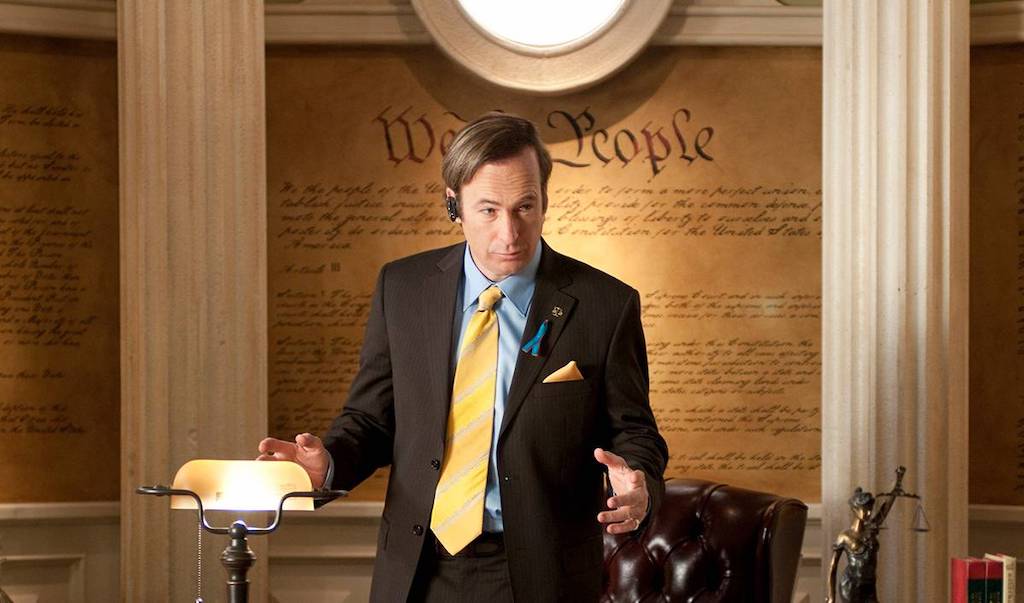
During “Point and Shoot,” the eighth episode of Better Call Saul’s sixth and final season, my heart rate went up so high that my FitBit recorded a workout. The intense, gripping nightmare of an episode that put Kim Wexler very close to death was a masterpiece in television storytelling. It felt like it lasted for five minutes but also five years. It never gave itself, its characters, or its audience any time to breathe without feeling overstuffed. Stressful events followed stressful events until the episode ended with a gut punch so emotionally devastating (Mike Ehrmantraut buries Howard Hamlin with his murderer Lalo Salamanca underneath the meth lab Walter White and Jesse Pinkman would later work in) that it felt like I actually got punched in the gut and lost air for several minutes. Medically, I am fine now.
The following episode, titled “Fun and Games,” is anything but that. Although slower-paced than “Point and Shoot,” it’s an essential episode that accelerates the story. By the end of the episode, Gustavo Fring has flirted over wine, Kim has left Jimmy and, finally, we see what so many expected of this show since the beginning: Saul Goodman in a lavish but tacky house, a saturated button-down and wide tie, just as we knew him on Breaking Bad.
For its first five and a half seasons, Better Call Saul moved slower than, say, a Buick in South Florida or me after a couple of glasses of wine. The show’s deliberate slow burn provided a significant contrast to its predecessor. The show focused on gradual character development rather than a fast-paced narrative. The first several seasons unpacked the complex dynamic between characters Jimmy McGill and his older, more successful brother Chuck McGill. Once Chuck died, the show began to focus most of its energy on the on-and-off-again romance between Jimmy and Kim Wexler. Along the way, the show gave us glimpses of Jimmy’s life both before Saul Goodman and after Saul Goodman, with subplots we’re familiar with from Breaking Bad developing in the background. At times, the show moved so leisurely that it felt like it would never get to the point where we even met Saul Goodman. Slowly, but surely, it’s gotten there with four episodes left.
All along, no matter how snail-paced it was, Better Call Saul felt like it was teasing an explosive endgame with an increase in pace along with inevitable death and destruction. The first half of the final season, which aired this spring, teased that speed and darkness with the final days and moments of Nacho Vargas and Howard Hamlin. Generally, though, the show kept its foot on the brakes. Now in its final episode push, the foot isn’t just off the brakes: it’s flooring the gas pedal with the brakes cut off.
Better Call Saul is now the opposite of what it’s always been. It is straight-up stressful, perhaps even more stressful than Breaking Bad, which spent its entire run at an incredibly rapid pace with frequent violence and wreckage, both physical and emotional. While nothing could have prepared anyone for the devastating episode that was “Ozymandias” (don’t make me say it but that’s the one where Hank dies), that outcome was inevitable and unsurprising given what came before it. On Better Call Saul, which has spent its entire run in a patient, quiet place, we’re completely unprepared for what’s to come. With Breaking Bad we could ask “is Hank going to die?” but we always knew the answer. With Better Call Saul we ask “will Kim die?” and we genuinely have no idea (though I, personally hope for her survival).
After years of coddling us with a reliable if slow pace, the final episodes of Better Call Saul feel like getting slapped in the face constantly for their 50ish minutes. Ultimately, this pace reversal is a dark, clever metaphor for how quickly Jimmy permanently abandons Jimmy McGill for Saul Goodman.
